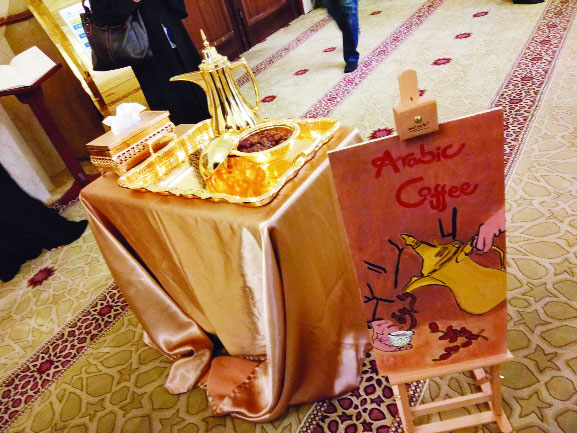When travelling in the Middle-East, get to know the rich and varied tastes of cuisine and traditional ways of serving at local pop-up retreats, says Sangeeta Yadav
The best ways to explore a new city is through its local food and what better way to do this other than dining at the home of a resident who serves you authentic delicacies.
If you wonder what an authentic Middle-eastern food tastes like and the traditional way of serving it, head to Sharjah, the third largest and most populous city in the United Arab Emirates. Popularly known as the cultural Capital of the Arab world by UNESCO, the city’s culture is firmly rooted in the Islamic traditions and values of Arabia that charm the visitors with its honesty, courtesy and hospitality.
One such person is Fatima Moghani who opens her home to tourists, welcomes them with a traditional majlis (an entrance way to welcome guests), dresses you up in a traditional attire and offers you a feast that one is not likely to forget soon.
At the majlis of the heritage house surrounded by mango trees, the ladies wearing abaya (black cloak) and shayla (a long scarf to wrap around the head) welcome you by showering flower petals, offer rose water to wash the hands and show the oud (Arabic incense made from agarwood) smoke in bakhoor (incense burner) that makes gives the ambience a nice smell and is welcoming. As you remove the footwear and enter the house, the formal greeting are extended as they say Salaam aleikum (peace be upon you) and Aleikum assalaam (and on you peace) to each other.
The feast starts by serving Arabic coffee with dates. Their coffee is made from Arabic bunn (beans) with additional ingredients like cardamom, saffron and sometimes even rose water.
Holding the dallah (coffee pot) from the left hand and served from the right in the tiny ceramic cups, the person would start from the eldest male member of the family and serve others to his right. “We serve the guests from the right hand because it is considered to be good. We greet people using the right hand, eat food from that and give things from the right. This is one of the ways to show respect. We keep one meter distance while pouring and serving the coffee in order to not spill on the guest. Also, if the cup has the slightest of crack or chip on it, it is strictly not used in serving,” Fatima says.
They offer you local dates which are high in nutritional value, one can notice henna on their hands that is another tradition which women love and follow by heart.
Sitting on the floor while eating is an ancient culture and the same tradition is carried today as well. For the gala lunch or dinner, the set-up is made on the floor with big bright colourful cushions to sit on.
The first thing that strikes the mind as we think of Emirati food is qsheed — meat of a baby shark pounded, boiled, and ground before being minced and mixed with spices. It is a delicacy in the Middle-East which is always in demand; the qsheed is best enjoyed with rice.
Another popular dish is chicken majboos which is made with steamed basmati rice, chicken meat and chickpeas marinated in spices and saffron cooked on low heat.
For vegetarians, the most popular and healthy dish that is in demand across Sharjah is hummus with pita bread or naan. Hummus is a levantine dip made chickpeas or other beans, blended with tahini, olive oil, lemon juice, salt and garlic. Their home-cooked mango pickle is not to be missed. One thing that is most commonly found is dates.
Their lavish spread of lip-smacking desserts includes phirni. Then there is Besbes coconut cake decorated with rose petals; ideal for those who like less sweet. A second serving of coffee is served with dates after the meal as well.
Time to say goodbye. The host again burns the oud and rose water to wash hands.
Dress to impress
A trip to the foreign land is incomplete if you don’t try out their traditional dress and jewellery. The host — Fatima Al Moghani — dresses you in to their traditional attire. Men are made to wear traditional white robe called khandura with a pair of long or short loose fitting trousers and a white head scarf on the head tied on the head with a black piece of cord (aghal). They also wear long rope-like tarboosh hanging from the neckline.
For the women the bright coloured jalabiya (gown) has intricate talli embroidery. To cover their eyes and cheeks, women wear traditional batola (burqa), an outer garment which they wear when they go out is the presence of male. To add charm to the entire look, women wear gold earrings, bracelets, head dress and long necklaces that goes perfectly well with the outfit.


























